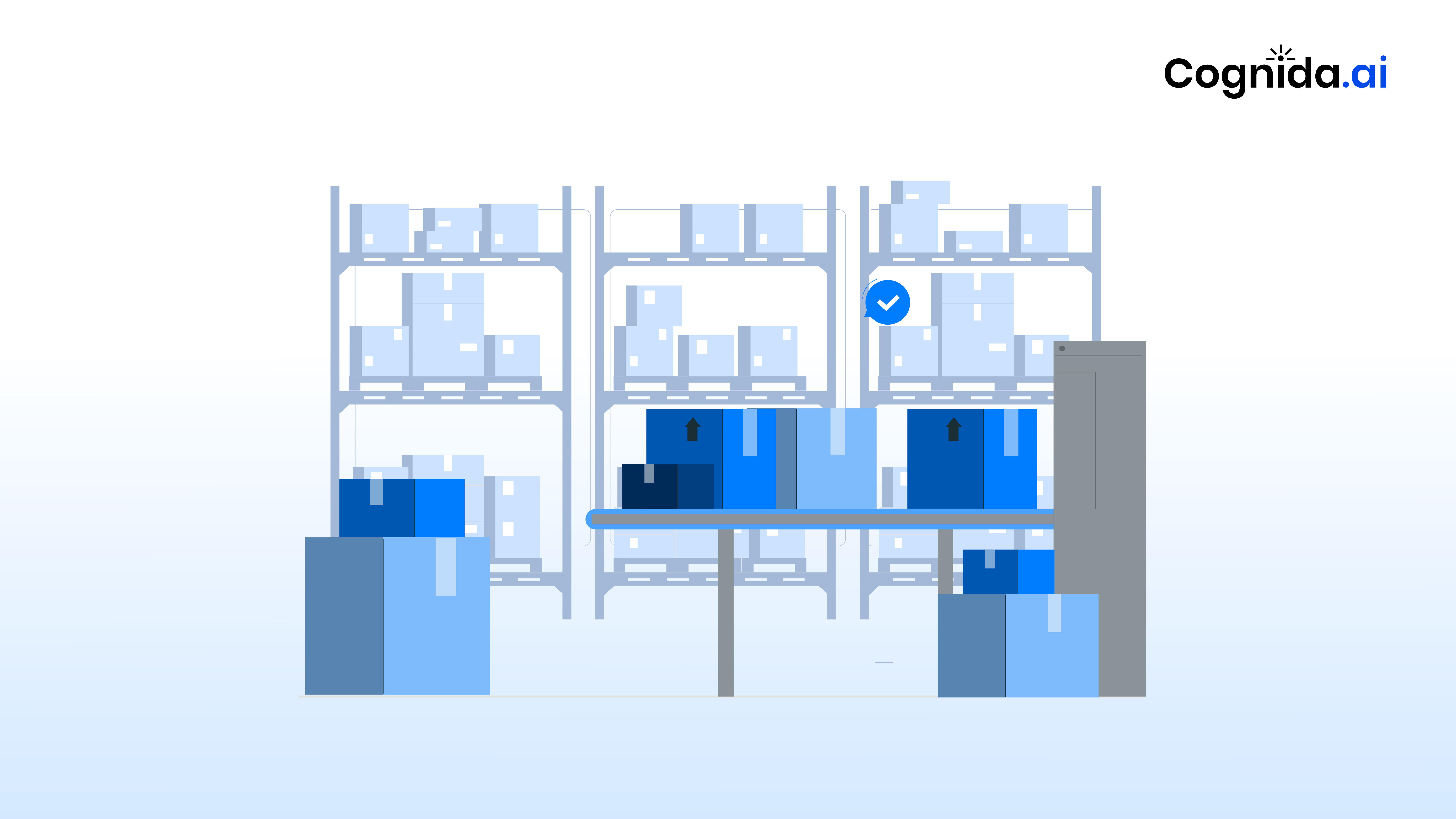Real-Time Supply Chain Elasticity and Resilience: AI-Driven Contract Warehouse Optimization

The Elasticity Challenge in Modern Supply Chains
Think of the supply chain as a rubber band. It snaps under pressure if it’s too stiff. It becomes ineffective if it is too loose. Finding that perfect balance of elasticity has become the holy grail of supply chain leadership. With market volatility at an all-time high, the bullwhip effect amplifying disruptions throughout the network and the difficulty integrating diverse data sources to make informed decisions, traditional rigid supply chain structures are proving increasingly fragile.
Why Contract Warehousing is the Game Changer?
Contract warehousing is evolving into the mainstay of robust supply chain design, not just another tool in your toolbox. Contract warehousing offers the elasticity that modern supply chains desperately need, with projections indicating that it’s expected to reach $9.5 trillion by 2032 in US.
Consider this: You require more capacity in the event of an unforeseen spike in demand. You need to be flexible with your geography as new markets appear. You need buffer storage in case your suppliers have difficulties. What-if, You had a GPS for your logistics that is not just guiding you, but showing the most efficient route, steer clear of traffic, and predict potential roadblocks? – That’s what AI brings to contract warehousing.
As a supply chain leader, you’re constantly looking for non-intrusive methods to make your network more resilient and elastic. AI-driven decision assistance in contract warehousing is the ideal way to accomplish it without having to deal with the expense and dedication of owned facilities.
AI-Powered “On-Demand” Warehousing – Building Non-Invasive Resilience
The missing piece in all this is Dynamic Decision Making. Here’s where many organizations hit a wall – Having access to contract warehousing options is one thing – but figuring out when, when, and how to use them is quite another. AI changes the equation at this point.
Today, contract warehousing conventional decision methods mostly rely on manual market analysis, historical data trends, static planning cycles and making decisions reactively. This results in reduced market responsiveness, increased expenses, and lost possibilities.
Our AI solution transforms contract warehousing from a static resource into a dynamic, on-demand asset.
- Based on the system’s ongoing modeling of critical supply chain factors we can provide dynamic, real-time decisions including when and where to activate storage space, how to optimize costs and transit times, modifying sourcing methods to lower risks, and more.
- AI model continuously assesses demand volatility patterns, supply reliability metrics, transportation network capacity, market condition indicators, and cost structure variations to maximize the elasticity of your network.
Our AI-powered method provides the insights you require without requiring significant operational changes, integrating seamlessly with your current systems. Like an expert navigator, the system continuously looks for potential capacity limitations, optimization opportunities, risk factors, and cost-saving options. Most significantly, you acquire the capacity to react to market shifts with assurance and accuracy.
Our AI-powered technologies serve as the foundation for both incoming and outbound logistics, reducing the bullwhip effect and improving supply chain management accuracy.
Elasticity in Action
Take a look at a recent instance – When a large company saw a 30% increase in demand and unanticipated supplier delays, its AI-powered system:
- Determined the best contract warehouse locations to buffer inventory
- Determined economic rebalancing tactics
- Estimated capacity requirements for various scenarios
- Suggested timing for modifications to warehousing contracts
The outcome? They cut overall logistical expenses by 22% while maintaining 99.8% service standards.
The Technology Foundation & Implementation: Your Path to Supply Chain Elasticity
Our AI system offers real-time decision support, predictive analytics, dynamic optimization, risk assessment, and cost modeling by fusing sophisticated algorithms with in-depth knowledge of the supply chain. We are aware that improving your supply chain’s capabilities must be both significant and doable. Our implementation strategy aims to produce immediate benefits while advancing toward thorough optimization:
Phase 1: Baseline and Assessment – Analyzing the current situation; identifying opportunities; and configuring the model initially
Phase 2: Active Optimization – Dynamic decision support installation; real-time monitoring activation; performance tracking; and active optimization
Phase 3: Improvement Across the Network – Increased capacity for optimization; sophisticated scenario planning; and ongoing development
The Cognida.ai Advantage
What sets us apart is our focused expertise in contract warehousing optimization. Our AI models aren’t generic supply chain tools – they’re purpose-built for the specific challenges of dynamic warehouse network optimization.
This specialization delivers results that generic solutions can’t match:
- Cost Reduction: Lower fulfillment costs by up to 40%.
- Faster Deliveries: Reduce transit times by up to 25%.
- Zone Optimization: Cut average zone percentages by 30%, directly impacting cost per order.
- Better Forecasting: Increase supply chain sourcing options by 15% and reduce forecast errors by up to 10%.
Taking Action
Supply chain flexibility is not only a competitive advantage but also a necessity for survival in the current unstable market. While some businesses are still having trouble with inflexible, reactive strategies, others are employing AI-powered contract warehousing optimization to create networks that are genuinely resilient.
Ready to transform your contract warehousing operations from a potential vulnerability into a strategic advantage? Let’s start with a conversation about your specific challenges and opportunities.

